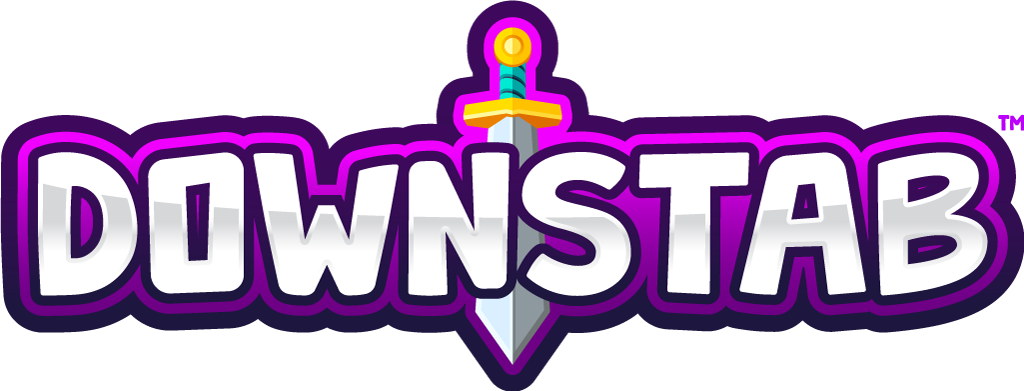Creating new ideas in video games is difficult. The same goes for any type of media, really. What hasn’t been told and what hasn’t been tried in this day and age? This makes for a great challenge when developing a video game, because no matter how hard you try, your game will inevitably be compared to another game that released before it.
So rather than be afraid of not standing out by being just like the rest of the crowd, why not fully embrace the elements that made other games excellent in your own game? Taking the best parts of other titles, mixing in a unique and interesting story, and giving the players addictive and exciting gameplay seems like a solid plan. This is precisely the case with indie game Children of Morta.
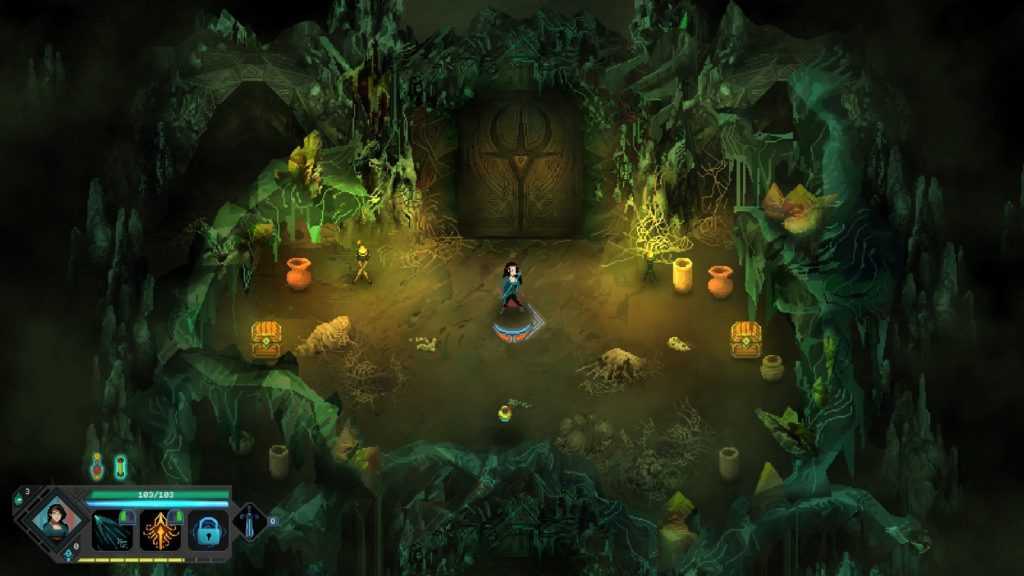
At its core, Children of Morta is a rogue-lite RPG that relies heavily on repeated trips through a set of dungeons. Exploring randomly generated rooms, picking up gold, improving your skills and abilities, rinse and repeat. It’s a formula gamers have seen countless times before, but one that works.
The greatest comparison I can make to this game is Diablo. The hordes of enemies you battle are an obvious homage to this great action RPG series. Taking the similarities further, beefed up “Furious” versions of enemies also pop up time and again, offering greater challenges but better reward drops. The Bergson family acts as the characters you can select, and also fall into several character archetypes: rogues with fast knife skills, a warrior with a sword and shield, and a flimsy yet powerful magic user to name a few.
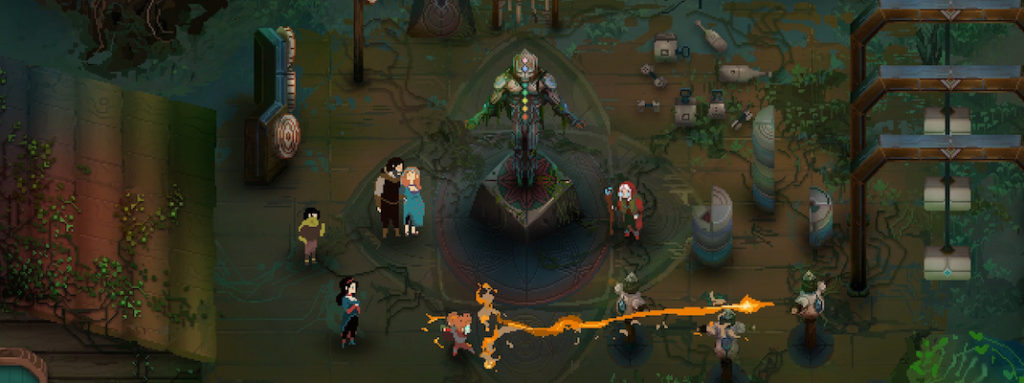
Immediately apparent from the onset is the narration. At almost every turn, every story element, and every major event, a narrator speaks of the events happening on screen. During your dungeon crawling you might find a small robot that you bring back to your home at the end of the mission. The narrator will then speak of how this automaton integrates into the family’s life, interacting with all the family members. There are other times where you can simply explore to Bergson’s family home to find bite-sized story pieces that are fully voiced by the narrator. If you’ve played Bastion before, this element of the game is very similar, and definitely a great addition here.
To help stand out from the pack visually, Children of Morta features a beautiful visual style: HD 8-bit pixels akin to Square Enix’s Octopath Traveler, for example. It’s amazing how you can see a blob of pixels sitting around a dinner table, but immediately recognize the different members of the Bergson family. You can see their emotion, laugh with their joy, and cry with their sadness, all in tiny square of color. It is a unique art style that has it’s flaws, but it is one that I appreciate seeing more of.
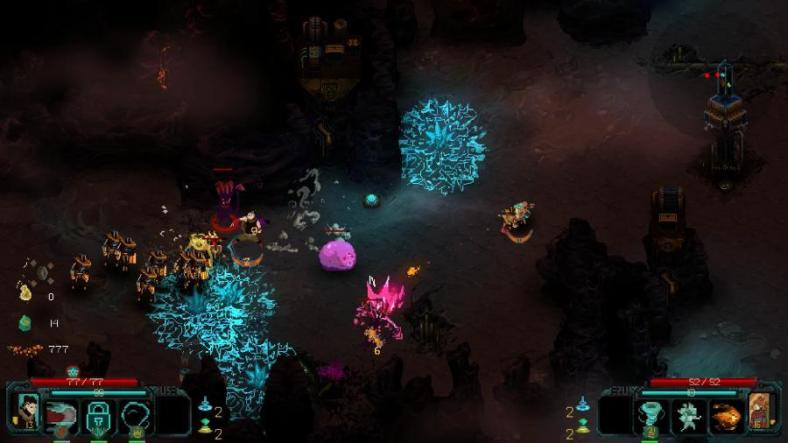
What Children of Morta gets absolutely right is it’s combat and level progression. After a venture into one of three dungeon areas, you’ll return back to your home where you can spend your found gold (called Morv) to get improvements for your entire family. Increased damage and health, longer lasting runes found in dungeons, increased Morv drops, higher critical hit and dodge chances, just to name a few. These abilities are not locked in to just one character, but rather your entire crew of Bergson’s.
Speaking of the family, each of the seven members have unique abilities to utilize in combat. Shield bashes from John, a fan of knives from Kevin, and Linda’s distance-creating bow and arrow set all mean each plays different from the other. At set character interval levels, you’ll unlock an ability that is granted to every member of the family. For example, getting Kevin up to level 8 will increase the dodge chance of all family members. This system incentives playing each character to some extent.
Which brings me to my final point of comparison. It is apparent from the moment you unlock other family members that there are some Bergson’s who are better at dealing with certain enemy types. For example, the normal skeleton enemies will group up and hound you, making them easy targets for Joey’s massive hammer swings. But these same enemies are a bit more difficult to take out with Linda’s bow. But then again, Linda’s bow is much better for defeating hulking giants with large HP pools and massive damage. Their slow speed means she can get away and poke damage, but Joey has to stay in close where he’ll have a tough time prevailing. I really enjoyed this diversity of gameplay, and had callbacks to Moonlighter. That game was similar in a few ways in terms of combat variance, but I never felt in that game you ever really benefited from changing weapons or tactics. In Children of Morta, that simply isn’t the case, and the game is much better for it.
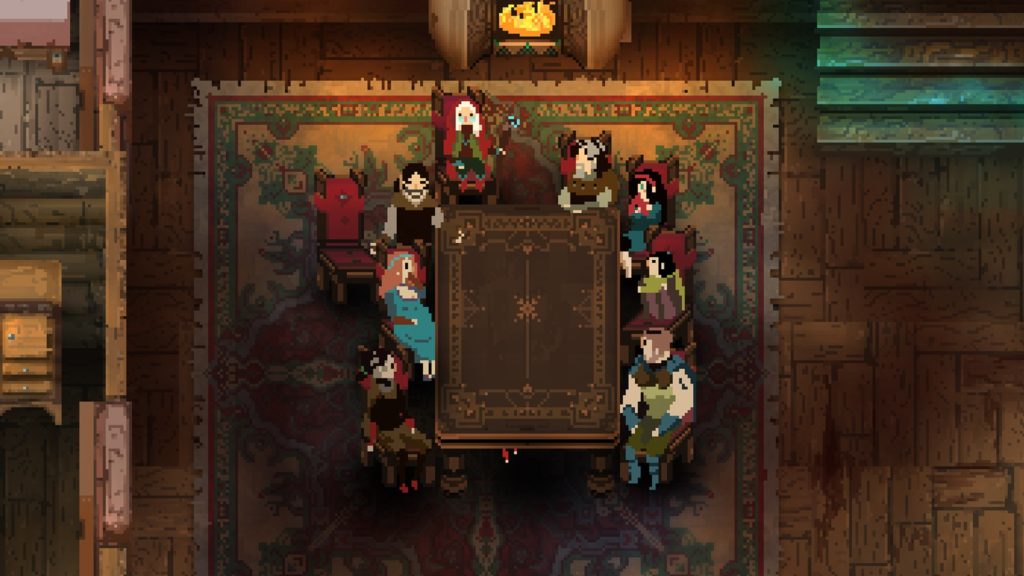
Children of Morta isn’t without it’s faults. The game has some horrendous load times on the PS4. There are also some audio and visual hiccups. On more than one occasion I encountered the narrator cutting himself off mid sentence. I also had my game crash a couple times upon returning to the Bergson’s house after a mission. These complaints are thankfully minor to an otherwise solid game.
They say imitation is the sincerest form of flattery, and in this overview of the game I’ve referenced four other titles. Children of Morta borrows heavily from these other games, but does so so effortlessly it still feels like an unique experience to play. If you like rogue-lite games, a heavy variety in combat, a story-driven experience, and addictive gameplay, Children of Morta is the game you didn’t even know you were looking for.
Laters,
Jsick
